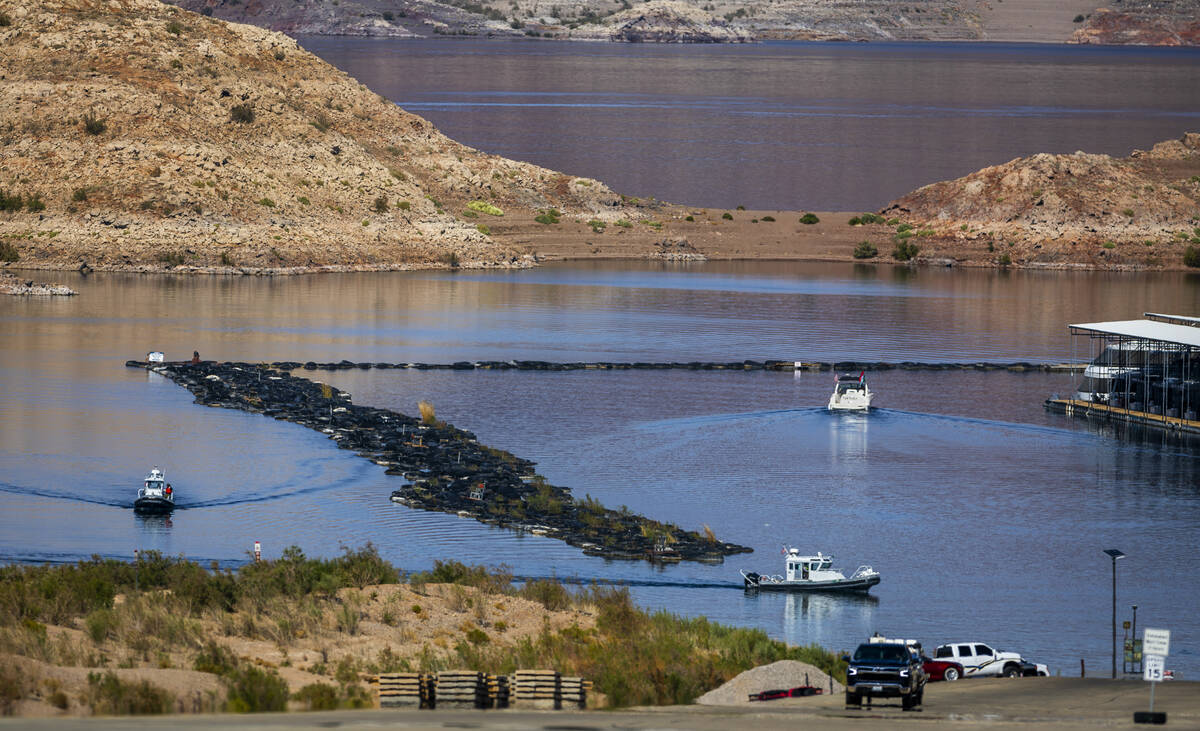Monsoon? What monsoon? Las Vegas remains in severe drought, report says
The sporadic showers of this summer’s monsoon season haven’t been enough to lift Southern Nevada out of federal drought conditions, according to a Tuesday report from the Nevada State Climate Office.
Following a dry winter for Southern Nevada’s Spring Mountains, monsoon season hasn’t delivered for the region either. Most of Southern Nevada remains under at least a designation of “moderate drought,” with pockets of extreme drought in Nye, White Pine and eastern Clark counties.
Nearly two-thirds of the state was experiencing drought as of Sept. 2, a significant increase compared with last year, when only 28 percent of the state had been in drought. The data comes from the U.S. Drought Monitor, a tool breaking down a map of the country by drought conditions.
“The Drought Monitor includes reservoir levels, stream flow characteristics, soil moisture, vegetative health,” said Baker Perry, Nevada’s state climatologist and a University of Nevada, Reno professor. “It provides an overview of the conditions in a given area beyond just a measure of precipitation.”
A non-soon season
Nevada is considered by scientists to be the driest state in the nation — a fact that 2025 has proven once again.
Monsoon season, from late June through September, is generally when Las Vegas gets the bulk of its rain, even shutting down roads from mass floods. Not this year.
No rain fell at the Harry Reid International Airport in August, Perry said, making it one of 15 months with no measurable precipitation in 89 years of data. As of Monday, the last time the airport recorded rain was July 3, at the beginning of monsoon season, when it recorded 0.02 inches.
This year has brought the fourth-driest monsoon season on record, according to the National Weather Service, though the season continues until Sept. 30. The other driest years are 1944 and 2020, which had only a trace of rain, and 2010, with 0.01 inches recorded.
“In Las Vegas, for the whole summer, that’s just a couple drops of rain,” Perry said. “It’s not much.”
Only 2.05 inches of rain had fallen in 2025 at the airport as of Monday, below the average of 2.27 inches. A normal rainfall year in Las Vegas brings 4.18 inches.
Reservoirs stable — except for Lake Mead
Most of the state’s reservoirs were in relatively good health, according to the report, with the exception of a handful.
One reservoir with low water levels is Marlette Lake near Carson City, explained by an ongoing dam repair project. The report highlighted Rye Patch and Lahontan reservoirs in Northern Nevada, which were 21 and 31 percent full, respectively.
Lake Mead, Southern Nevada’s primary water source, remains below where meteorologists hope it to be, with a poor outlook for 2027, when it could fall below its 2022 historic low. As of Sunday, it was 31 percent full, or 1,056.40 feet above sea level.
Contact Alan Halaly at ahalaly@reviewjournal.com. Follow @AlanHalaly on X. Review-Journal staff writer Kevin Barr contributed to this report.


















